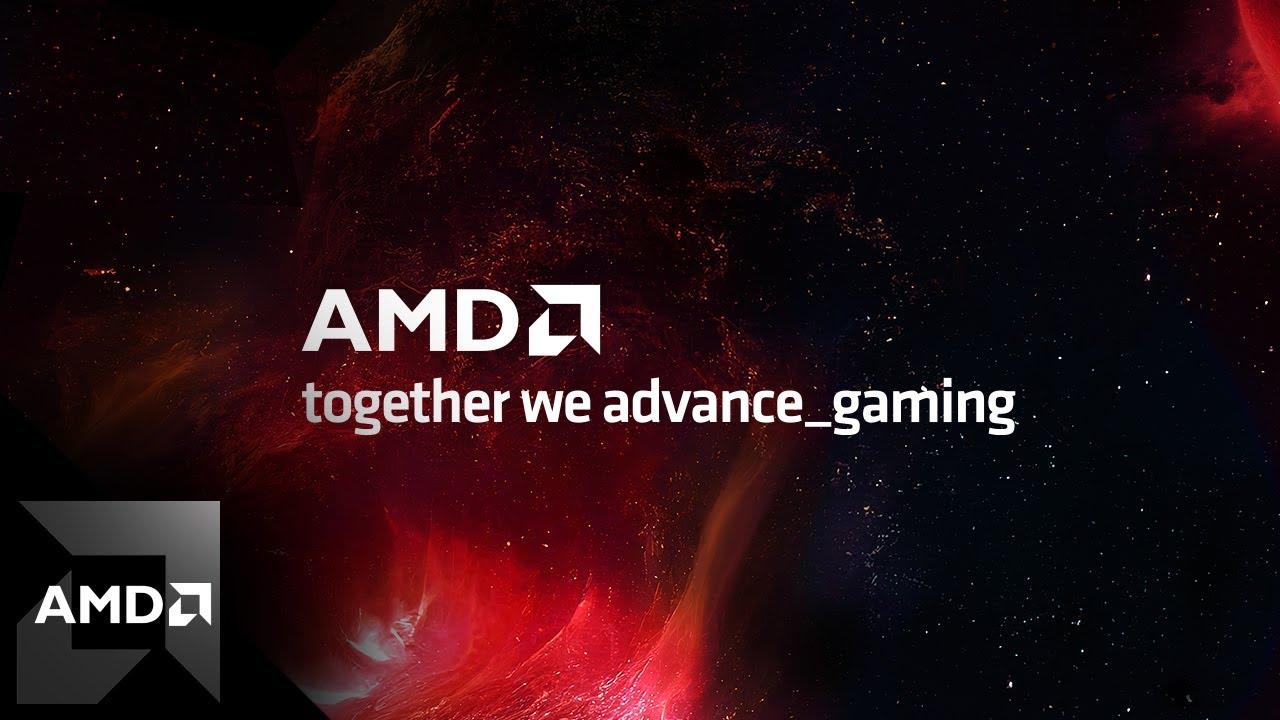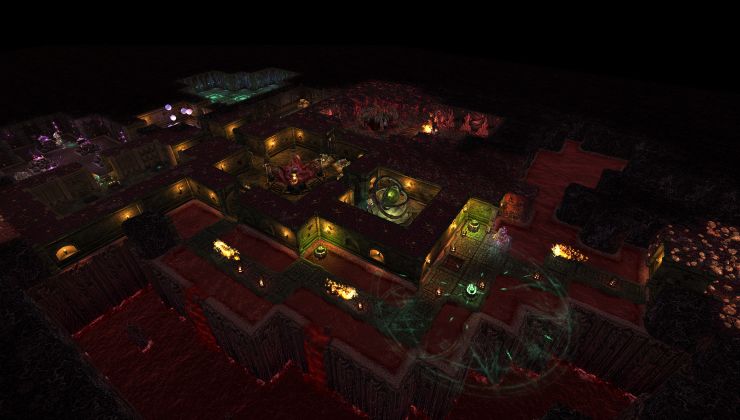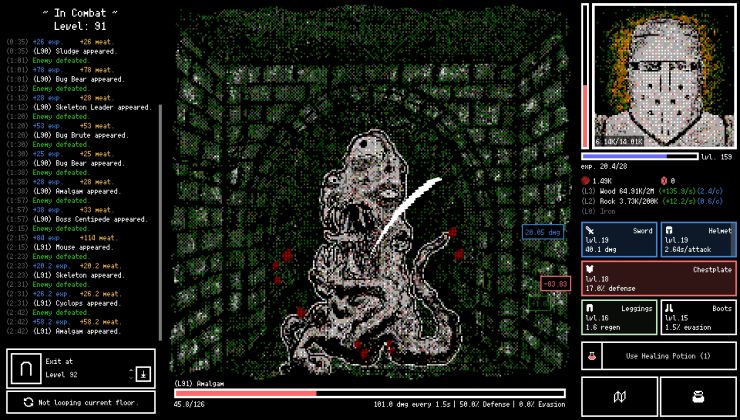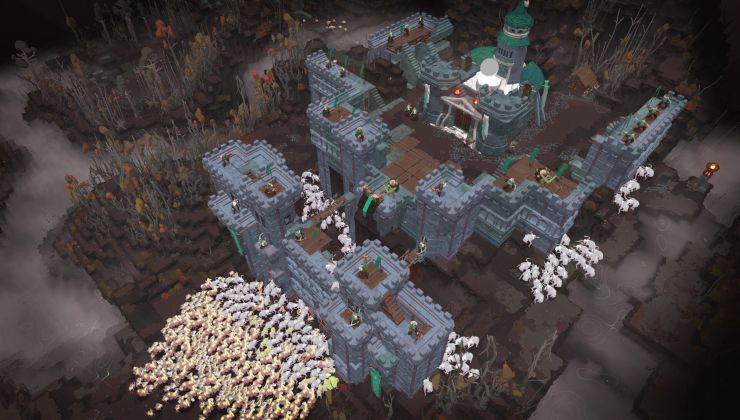Today at the AMD "together we advance_gaming" event, AMD revealed their new RDNA3 architecture along with the RX 7900 XTX and RX 7900 XT GPUs. Both of these new cards will be available on December 13th, and AMD threw plenty of shade at NVIDIA of the power use and connector issues during the event talking about how "easy" it is to upgrade to it and noting the power use.
Specifications:
| AMD Radeon RX 7900 XT | AMD Radeon RX 7900 XTX | |
| Memory | 20 GB - GDDR6 Infinity Cache - 80 MB Ray Accelerators - 84 |
24 GB - GDDR6 Infinity Cache - 96 MB Ray Accelerators - 96 |
| Speed | Base Frequency - 1500 MHz Boost Frequency - Up to 2400 MHz Game Frequency - 2000 MHz |
Base Frequency - 1900 MHz Boost Frequency - Up to 2500 MHz Game Frequency - 2300 MHz |
| Connections | DisplayPort 2.1 HDMI 2.1 USB Type-C |
DisplayPort 2.1 HDMI 2.1 USB Type-C |
| Rendering | HDMI 4K Support 4K H264 Decode 4K H264 Encode H265/HEVC Decode H265/HEVC Encode AV1 Decode AV1 Encode |
HDMI 4K Support 4K H264 Decode 4K H264 Encode H265/HEVC Decode H265/HEVC Encode AV1 Decode AV1 Encode |
| Power | Typical Board Power (Desktop) - 300 W Minimum PSU Recommendation - 750 W |
Typical Board Power (Desktop) - 355 W Minimum PSU Recommendation - 800 W |
| Dimension | Length - 276 mm Slot Size - 2.5 slots |
Length - 287 mm Slot Size - 2.5 slots |
| Pricing | $899 | $999 |
They also teased FSR3, which will be due out next year but didn't go into much detail on it. According to AMD FSR3 is "expected to deliver up to 2X more FPS compared to AMD FSR 2 in select games".
- AMD RDNA 3 Architecture – Featuring an advanced chiplet design, new compute units and second-generation AMD Infinity Cache technology, AMD RDNA 3 architecture delivers up to 54% more performance per watt than the previous-generation AMD RDNA 2 architecture. New compute units share resources between rendering, AI and raytracing to make the most effective use of each transistor for faster, more efficient performance than the previous generation.
- Chiplet Design – The world’s first gaming GPU with a chiplet design delivers up to 15% higher frequencies at up to 54% better power efficiency. It includes the new 5nm 306mm Graphics Compute Die (GCD) with up to 96 compute units that provide the core GPU functionality. It also includes six of the new 6nm Memory Cache Die (MCD) at 37.5mm, each with up to 16MB of second-generation AMD Infinity Cache technology.
- Ultra-Fast Chiplet Interconnect – Unleashing the benefits of second-generation AMD Infinity Cache technology, the new chiplets leverage AMD Infinity Links and high-performance fanout packaging to deliver up to 5.3TB/s of bandwidth.
- Expanded Memory and Wider Memory Bus – To meet the growing requirements of today’s demanding titles, the new graphics cards feature up to 24GB of high-speed GDDR6 memory running at 20Gbps over a 384-bit memory bus.
Based on the pricing, they seem like pretty great value to me. Having a flagship under $1K is a very good move when compared to what NVIDIA are offering. If the performance is in any way comparable, it should sell quite well.
From the press release: “These new graphics cards are designed by gamers for gamers. As we were developing the new cards, we not only incorporated feedback from our customers, but we built in the features and capabilities we wanted to use,” said Scott Herkelman, senior vice president & general manager, Graphics Business Unit at AMD. “We also realized that we needed to do something different to continue pushing the envelope of the technology, and I’m proud of what the team has accomplished with AMD RDNA 3 and the Radeon RX 7900 Series graphics cards. I can’t wait for gamers to experience the powerhouse performance, incredibly vivid visuals and amazing new features these new graphics cards offer.”
Full event can be seen below:

Direct Link
Also, it's still fun to see the Steam Deck picture on such events. AMD made the APU so it's only natural for them to highlight it but nice to see it again like this for a device that's helping to do so much for Linux gaming as a whole.
And I don't understand the AI accelerator part.
OMG, the price!?!
Ehhhh, guess my 2019 1070ti can hold out for a few more years. It'll still play anything on the market, I'm sure.
What's especially nice is that they didn't increase board power (so same TDP as before), unlike Nvidia. So no need for those humongous GPUs with power draw issues.
Looking forward to some benchmarks of these new GPUs on Linux and to Sapphire models for them.
Last edited by Shmerl on 3 Nov 2022 at 9:03 pm UTC
What's especially nice is that they didn't increase board power (so same TDP as before), unlike Nvidia. So no need for those humongous GPUs with power draw issues.Not sure why it keeps getting said that the 4xxx series is using a lot more power, it's the same average/max power as the 3xxx series just with a new connector, to the watt (both the 3090 and 4090 are 450 watt cards, the other series also match wattage) the 850 watts is just recommended minimum in a common system setup, like the ATI one has a recommended minimum 800 watts. A lot of the overheat issues on the connectors are actually bend radius/cable stress issues, which is one thing I don't like about either ATI or NV, and I hope both new card series get a power buss adapter at some point to remove strain off the cables. 5nm process actually means this ATI card should be slightly LESS efficient, I would assume from posted specs the tradeoff is in mostly the core count and compute/RT capabilities. I would imagine in just raw raster this card will be damned good but once you get into more advanced lighting/higher resolutions or newer engines that can offload more calculations to the graphics card/render scenes from multiple threads this will quickly fall behind the nvidia cards, which is pretty in-line with previous card generations. That's my prediction based on the specs posted from both card series anyways, it'll be interesting to see some proper benchmarks.
-Card size looks good also compared to Nvidias massive card.
-Pricing looks to be very good, if the performance is up there close enough.
-AV1 encoder looks neat.
-8K gaming figures are super stupid. Ultrawide 8K is not 8K really.
-Every benchmark had FSR enabled but i didn't see any mention in what mode.
-There was no comparison with the competition, so i guess they don't really have that sort of performance.
-Raytracing performance still didn't look too good. Improvement from last gen at least.
Lots of hype words like worlds first, unprecedented etc, but thats how those events are with every other manufacturer also.
Lets wait and see what the third party benchmarks will look like. Hopefully it's competitive enough.
Last edited by Xpander on 3 Nov 2022 at 9:34 pm UTC
Not sure why it keeps getting said that the 4xxx series is using a lot more power, it's the same average/max power as the 3xxx series just with a new connector
From what I've read, 4000 series bumped power supply requirements. So unless someone was mistaken, it means they do draw more power.
once you get into more advanced lighting/higher resolutions or newer engines that can offload more calculations to the graphics card/render scenes from multiple threads this will quickly fall behind the nvidia cards
Not sure what that means. Compute units are compute units. They are either faster or not. More complex computation is going to be more taxing on any hardware. I think AMD was beating Nvidia already in RDNA 2 in their compute units throughput and efficiency though. The only advantage Nvidia had were better ray tracing ASICs.
Last edited by Shmerl on 3 Nov 2022 at 9:35 pm UTC
-8K gaming figures are super stupid. Ultrawide 8K is not 8K really.
-Every benchmark had FSR enabled but i didn't see any mention in what mode.
What I find a bit ironic is mention of 8K but with upscaling at the same time. A better idea in case someone wants better image quality is to use a more reasonable resolution where upscaling isn't needed :)
Last edited by Shmerl on 3 Nov 2022 at 9:38 pm UTC
Official power specs from Nvidia show 3090 and 4090 have the exact same power requirements, but the 4090 actually has a better power curve (4nm process is far more power efficient than the 3xxx series 8nm process) meaning it'll draw less for like-operations as it ramps up. I think part of the confusion is right now they've only launched the 4090 and 4080 and they're being compared to the 3050/3070 which were FAR lower TDP cards than the 3080/3090Not sure why it keeps getting said that the 4xxx series is using a lot more power, it's the same average/max power as the 3xxx series just with a new connector
From what I've read, 4000 series bumped power supply requirements. So unless someone was mistaken, it means they do draw more power.
Official power specs from Nvidia show 3090 and 4090 have the exact same power requirements, but the 4090 actually has a better power curve (4nm process is far more power efficient than the 3xxx series 8nm process) meaning it'll draw less for like-operations as it ramps up.
Not what I've seen reported by some like Gamers Nexus, who said that power spikes on 4000 series is simply worse, which in bottom line means you need beefier power supplies.
I surely hope AMD wouldn't have this problem in 7000 series.
Last edited by Shmerl on 3 Nov 2022 at 9:44 pm UTC
Not sure what that means. Compute units are compute units. They are either faster or not. More complex computation is going to be more taxing on any hardware. I think AMD was beating Nvidia already in RDNA 2 in their compute units throughput and efficiency though. The only advantage Nvidia had were better ray tracing ASICs.ATI's design focuses more on fast, but fewer units, and a very thin/fast driver layer. They tend to beat nvidia in speed on a per-thread basis, but nvidia's approach is more of "tons of general purpose cores", basically the more parallel you can make the task the more advantage to nv's approach. You can see this in the 2xxx and 3xxx series benchmarks as well where the ATI cards tend to do better for a lot of operations but fall off hard once you start introducing newer engines/lighting/etc that can actually make use of the NV card properly. Obviously this won't affect everyone, if you want the best card for 1080p/1440p high settings for the price, the ATI will win hands down, but I fully expect VR/Ray Tracing/newer engines like UE5 for the NV cards to pull way ahead.
I like AMD. I have been using AND cards from the 7850 upward and I love the Deck but I do like to see some actual tests before I buy anything.
It remains to be seen if that comes with a performance hit, I am highly curious
ATI's design focuses more on fast, but fewer units, and a very thin/fast driver layer. They tend to beat nvidia in speed on a per-thread basis, but nvidia's approach is more of "tons of general purpose cores", basically the more parallel you can make the task the more advantage to nv's approach
That's not how I remember it. AMD had asynchronous compute and focus on parallelized workloads way before Nvidia and their hardware is better at it from what I know. May be something changed in the last generation, but I doubt AMD is planning to not compete in that area, it wouldn't make sense.
If by lighting you mean ray tracing, then yeah as I mentioned above Nvidia had better ray tracing hardware so far. It remains to be seen how they compare in the new iteration.
Last edited by Shmerl on 3 Nov 2022 at 10:01 pm UTC
It seems to me that the big deal here is actually the chiplet design. Sure, it's not several compute chiplets, but the whole point is they can build it cheaper by reducing chip surface in 5nm, having the memory controller separate.The 5nm is really the key to the lower price, 4nm is ABSURDLY expensive to produce and right now can only be done in extremely limited quantities, going 5nm and just sacrificing core count gives them a MUCH faster card than the last gen ATI but costs them less than 1/3 to produce. It'll be interesting to see what kind of coolers these cards get though, that's a big high wattage card for 5nm, it's going to need some beefy cooling. I hope this next gen in general we see more of the hybrid self-contained watercooling cards that were around in the 2xxx series, I love those, they run near silent...
It remains to be seen if that comes with a performance hit, I am highly curious
Cards should get a rating on how loud they are.
I wouldn't buy a reference card, noise being one of the reasons. AMD partners like Sapphire generally make better cooled and more silent designs since they need to differentiate in something.














 How to set, change and reset your SteamOS / Steam Deck desktop sudo password
How to set, change and reset your SteamOS / Steam Deck desktop sudo password How to set up Decky Loader on Steam Deck / SteamOS for easy plugins
How to set up Decky Loader on Steam Deck / SteamOS for easy plugins
See more from me